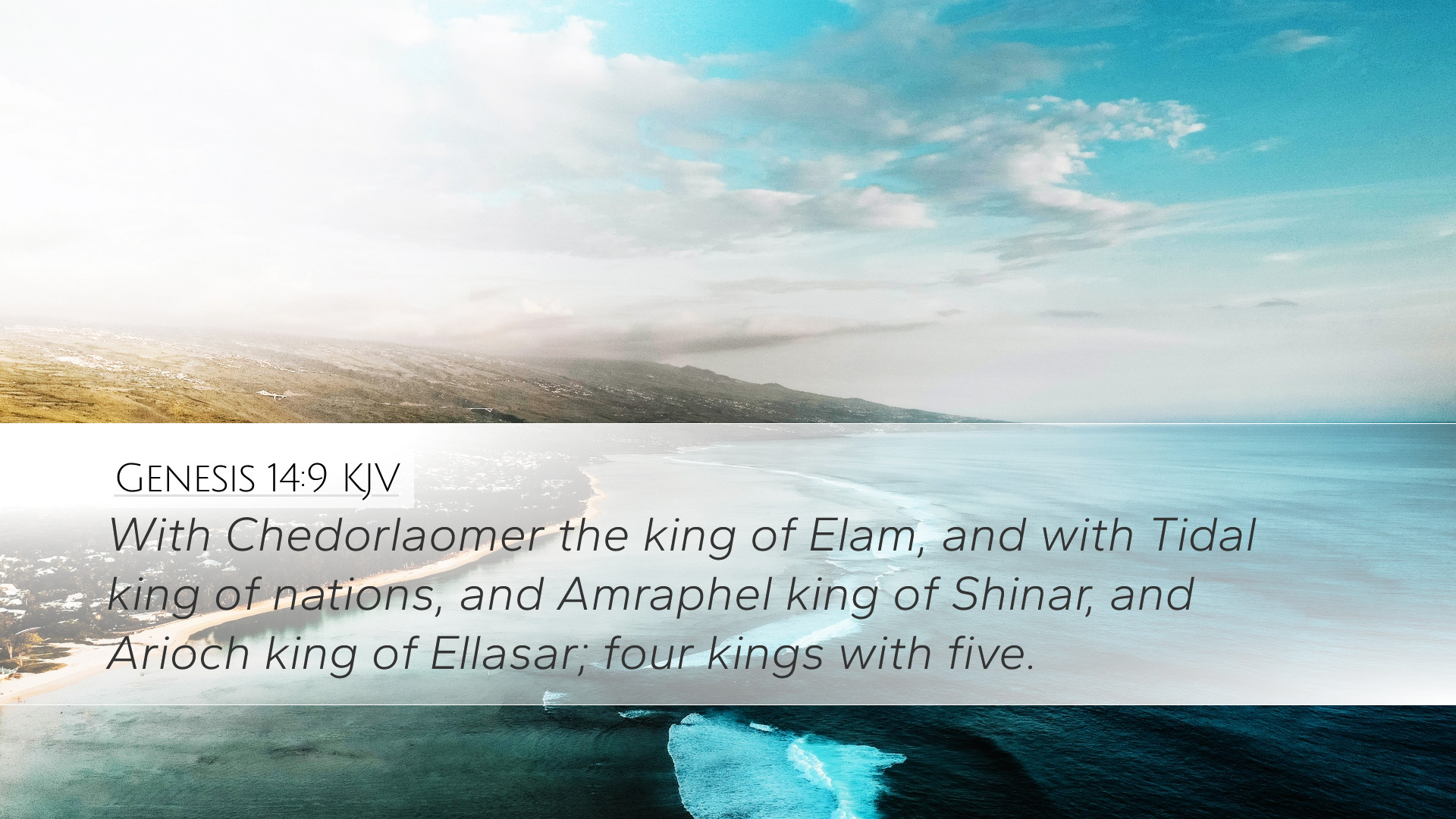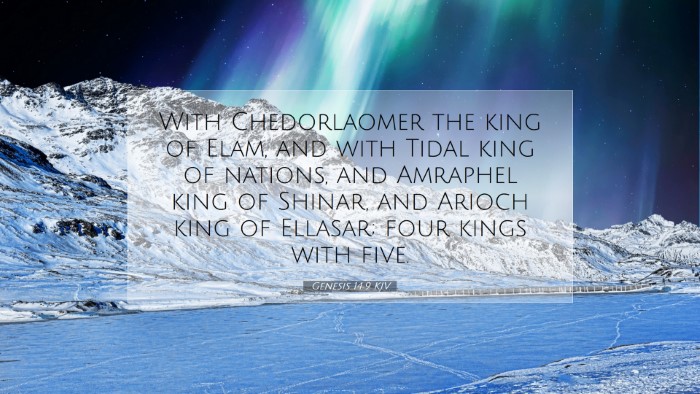Commentary on Genesis 14:9
Genesis 14:9 records a pivotal moment in the narrative of the early patriarchs, particularly focusing on the conflict involving Chedorlaomer and the kings of Mesopotamia against the kings of the cities of the plain, including Sodom and Gomorrah. The verse states: "With Chedorlaomer, the king of Elam, and Tidal, king of nations, and Amraphel, king of Shinar, and Arioch, king of Ellasar; four kings against the five."
Contextual Background
The historical backdrop of Genesis chapter 14 is essential for understanding the implications of these kings' conflict. The involvement of multiple regions and rulers indicates a significant geopolitical struggle. The references to kings of notable cities and regions underscore the allied nature of these kings as well as their authority and influence.
Analysis of Key Themes
1. The Nature of Power Struggles
As Matthew Henry elaborates, this verse illustrates the turbulent times of this ancient world, emphasizing the struggle for power and dominance among nations. It serves as a reminder that conflicts are often driven by the ambitions of powerful leaders.
2. The Significance of Alliances
Albert Barnes notes the importance of alliances among these kings. The coalition of four kings against five reflects a tactical strength and signifies a common cause or threat level that unites them. This not only speaks to the politics of the time but also sets the stage for the eventual rescue mission by Abram, highlighting divine providence in conflict.
3. The Historical Context of the Kings
Adam Clarke emphasizes that understanding the identity and historical significance of these kings can enhance our comprehension of this narrative. Each king has specific connotations that echo through Israel's history and theological reflection, such as:
- Chedorlaomer: Representing the might of Elam, symbolic of worldly power.
- Tidal: Often connected with great nations, indicating a broader political landscape.
- Amraphel: A ruler associated with Babylon, underscoring the ancient cities' influence.
- Arioch: Less known but equally significant as a powerful regional leader.
Spiritual Reflections
This conflict, while historical, carries spiritual reflections relevant for pastors and theologians today. It invites consideration of how power dynamics affect faith practices and community interactions.
1. The Intersection of Faith and Politics
This passage suggests a continual intersection between faith and the political realm. Leaders, often influenced by ambition or fear, can engage in practices that challenge spiritual integrity. Pastors may reflect on how modern challenges mirror these ancient struggles.
2. Divine Sovereignty Amidst Conflict
The unfolding narrative, as it progresses beyond this verse, ultimately leads to Abram's intervention, suggesting that even amid dire circumstances, God's sovereignty reigns. Students of theology may draw parallels to New Testament themes where God's plan prevails regardless of earthly tumult.
3. Righteousness in Adversity
Abram's actions in response to these kings later in the chapter exemplify righteous leadership. This raises vital questions for clergy and lay leaders alike regarding their appropriate responses to societal conflicts and injustices.
Practical Applications
For pastoral ministry and theological practice, several applications arise from Genesis 14:9:
- Teach the Complexity of Human Nature: Acknowledge the propensity for power struggles and the moral intricacies involved.
- Emphasize the Need for Unity: Encourage collaboration among believers, reflecting on the coalition of kings and the strengths of unity in diversity.
- Affirm God’s Control: Inspire faith in God's overarching plan despite evident chaos, grounding leaders in the belief that righteousness will ultimately prevail.
Conclusion
Genesis 14:9 presents a rich tableau of ancient geopolitical strife that resonates with timeless themes of power, alliance, and divine providence. By delving into this passage, pastors, students, and theologians can uncover profound insights into the nature of conflict, the role of leadership, and the unwavering sovereignty of God amidst human affairs.


